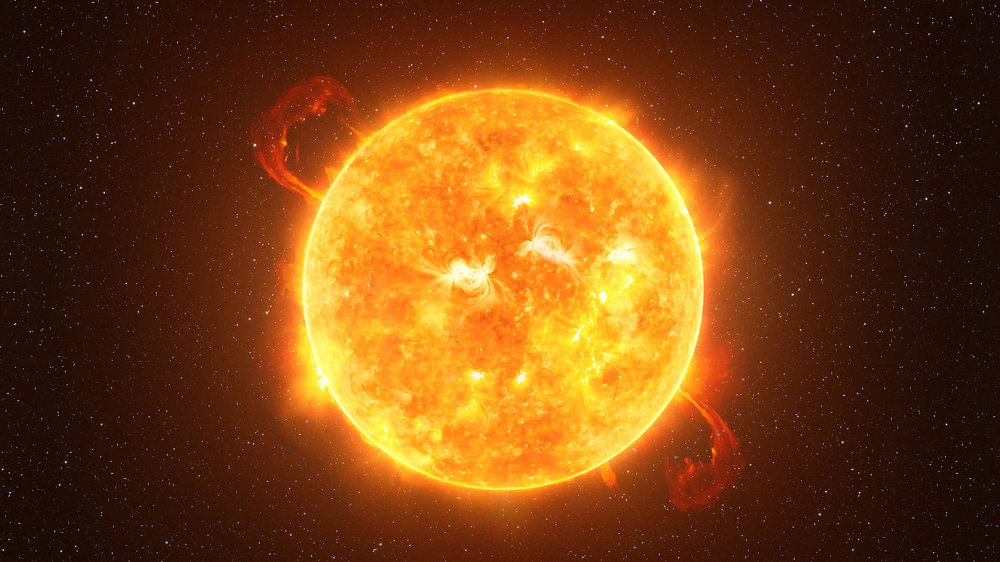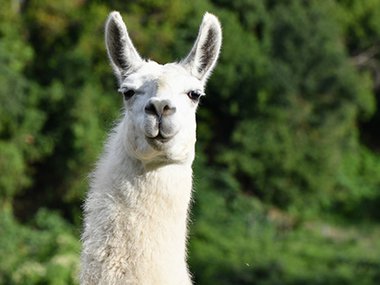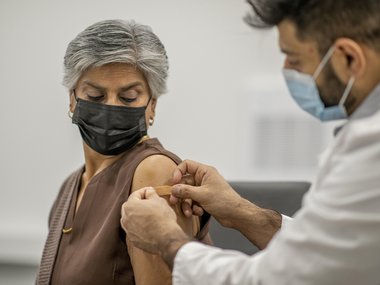2016 Top 5 Deep Cuts
As the year comes to a close we tend to look back at all the amazing things that took place in the last 12 months. 2016 is no exception to that rule. There were a myriad of awesome moments this year for the world of science. Let’s close out this year by asking the big wrap-up question: What science milestones took place in 2016?
Hands down the biggest science news stories this year would belong to NASA and climate change. NASA’s Juno mission arrived at Jupiter and is already sending back all kinds of awesome data. Back here on Earth, over 100 nations joined together to put the Paris Climate Agreement into action and take accountability on human impacts to climate change. While those may be biggest news stories, let’s not forget that there were interesting breakthroughs all year long. So, let’s explore the 2016 science deep cuts!
5: Cockroach Milk
First of all, keep in mind that our planet is filled with all kinds of weird animals. We have a mammal that lays eggs. Weird. We have a bird that swims better than it can fly. Strange. We also have a specific species of cockroach, the Pacific beetle cockroach, that gives live birth and then produces milk. How bizarre! That cockroach is exactly what an international group of scientists have been studying because the milk crystals it produces could play a vital role in the future of nutrition on Earth.
This particular cockroach produces these milk crystals to feed its young. Remarkably, the “milk” here is about three times more dense than buffalo or cow milk. The cockroach milk is super dense with proteins, fats and sugars. Many scientists consider these milk crystals to be superfood, giving the living system everything it needs for upkeep and nutrition. The greater issue now is how do we get this milk in normal quantities? Keep in mind, tiny insects will produce tiny byproducts. A cow can easily produce up to eight gallons a day, but these little cockroaches will only create a minuscule fraction compared to larger animals.
Scientists took the initiative by sequencing the genetic information needed for this milk to be produced. The goal is to attempt to get a bacteria to produce these crystals in a lab. Once the production has begun, they can then find a way to put it in a form that can be consumed by the many people around the world who struggle to meet daily nutritional needs. Our daily lives in the United States is not the ideal testing ground for these milk crystals because we are not having issues finding nutrition. In fact, we consume more calories than we need here, but there are many places around the world where a daily source of nutrition is still very difficult to come by. These scientists hope to be able to take these milk crystals and reproduce them in a lab in order to deliver them around the world to the many people that are in need of a cheap, healthy and consistent form of nutrition.
Long term applications for this idea could also include remote production of this milk crystal in places far from home, like on board the International Space Station or Mars. For now the testing will continue in hopes to have some success with crystal production in the near future.
Sure, cockroaches are considered totally gross by most people, but this is a great reminder of the unbelievable potential that surrounds us in the natural world. Keeping all of our planet’s species safe and accounted for while also encouraging science programs that explore out-of-the-box options like this are vital to the future of the human species. Our day-to-day world may not involve a lot of nature, but we must keep in mind that we are absolutely a part of the natural world. Our decisions can create massive changes for other species. Our planet is a remarkable place with over 75 billion tons of living things. Everything from the cure for cancer to the cleanest way to provide energy for us could be laying right in front of us.
Keeping species like this cockroach around is vital for future generations since they will face new issues that we can’t predict right now. Regardless, the amount of resources available to us on this planet is what we are limited to for the time being. Let’s make it a point to preserve the natural world because we are absolutely a part of that story too. Everything is on Earth is connected. The decisions we make will impact everything else, including cockroaches that make milk.
4: Giraffe Species
When we think of these awesome animals we usually think about the long neck, horns, a black tongue and some cute memes on the internet. While all this may be true, our understanding of these animals just became for more detailed. In a recent study scientists conducted a biopsy of many different giraffes and came to a very interesting conclusion: the genetic makeup of the animals they studied showed four distinct lineages of giraffes. This means there are four distinct genetic paths that the animals took over long periods of time, which lead to the evolution of the giraffe family. Not only did the giraffe family branch out into four species, but the individual species don’t mate with each other unless they are the same exact species.
The mystery now is to figure out what could have caused that evolution in the first place. When species become isolated from one another they adapt to various changes in the environment and evolve into the versions that we are familiar with ultimately. Charles Darwin’s famous trip to the Galapagos island is a great example of different organisms evolving due to being separated from one another. Giraffes however pose a very interesting mystery. These are animals that graze and wander around Africa. There’s no big ocean or massive mountain chain keeping them apart from one another. So, why did they end up the way they did?
This discovery, while surprising, makes perfect sense. We’ve known about giraffes for a long time, but that does not mean we have studied them enough. There are still a myriad of mysteries left here on Earth, we just need more resources and scientists that are ready to dig in and contribute to the knowledge about the natural world that is all around us. Clearly there’s more work to be done on this biological evolutionary mystery, but this study is a great example of how science can find itself rewriting text books every now and then even though it’s a pain in the neck. Super long neck, that is.

Image credit: Getty Images
3: Solar Impulse 2
On December 17, 1903 the Wright Brothers ushered in a new era for how humans traveled. The initial plane designs were modest, slow and very limited in passenger space. Regardless, the first domino was knocked over and would quickly lead to a lot of breakthroughs in aviation. In fact, there are many people who lived to see both the first flight and the lunar landing. Through science and research, that’s how far we were able to take the concept of flight in just one person’s lifetime. Despite all of the remarkable growths in the aviation industry, there is still one place where we need to advance still: energy.
Right now, making just one cross country round trip is the equivalent of 10% of the average American’s annual carbon footprint. Now imagine how many people are traveling around the world every single day via airplanes. This adds up to a significant amount of heat trapping gasses being released into the atmosphere. So much so that it’s becoming a big issue for environmentalists around the world.
That’s where this amazing project comes into play. We’ve been following the progress of Solar Impulse 2 for quite some time now. If you wish to follow their journey try checking out some of our earlier articles on this year long journey. For now though, the big news is that this trip has been completed, going all the way around this planet, without using a single drop of fossil fuel.
There’s no true way to compare this plane to others, but we can at least look at modern fuel consumption to gauge the amount of work left to be done up ahead. Right now standard passenger jets use about one gallon for every five miles they travel. This five miles to the gallon fuel rate is just not going to cut it for future generations that are dealing with combating the vast amounts of carbon dioxide (CO2) emissions in the atmosphere, the rising global temperatures and the general need for finding cleaner means of harvesting energy. Using modern jets to make this world wide trip would require over 13,000 gallons of fuel.
So, sure, this trip took a year, Solar Impulse 2 topped out at around 50 miles per hour, only has room to seat 2 people, and has no on-board entertainment, but it’s still sending a very powerful and hopeful message about the potentials that await the flight industry if they were to harness solar technology. Aviation and energy scientists are convinced that with proper funding and research the solar flight industry could really take off.
2: Medical Tattoos
Currently, scientists are working on a medical tattoo that could make a pretty big impact down the road. This breakthrough in tatting-technology involves the worlds of both medicine and nano-science. The concept here is fascinating and one that could revolutionize how we approach autoimmune diseases like multiple sclerosis, celiac and leukemia, among others.
For this procedure scientists took a creative new look at what all could be involved in making a special type of disease fighting ink. By taking the medication and fusing it with a carbon cluster nano-particle scientists were able to design a special medical ink. This ink would be administered to the skin much like a tattoo, or in this case, a temporary tattoo. As the skin absorbs the ink it slowly releases it into the body. This means the dose is able to be put into the body bit by bit over time as opposed to in and out of the blood stream like standard injected medication.
Once this special ink is in the system it does something very powerful. The medicine and nano-particle combination impact the T-cells in the body. These are considered to be the look outs for our body’s immune response. When they are alerted to foreign components they wave a flag for the immune system to get active and eradicate the intruders. Now, usually, this is a good thing and the exact purpose of the T-cell to immune system relationship. However, in cases of autoimmune diseases, this can lead to detriment when the immune system is actively killing off healthy cells in the body.
The goal of this new procedure is to prevent the immune system from being active when it need not be. Shutting down the T-cells ability to activate the immune system would prevent the killing off of healthy cells while infected ones are addressed by the doctors. Once the full dosage is used up the tattoo will have disappeared from the skin as well. This temporary medical tattoo is still in trial stages, but shows great promise at dealing with diseases that impact such a large portion of the population.
Currently, there are 45 million people in the United States that have at least one tattoo. Oddly enough there are about 50 million people in the United States that are affected by autoimmune diseases. These two numbers have nothing to do with one another, but it is interesting to consider how popular tattoos are and could potentially address some of the future procedures in addressing autoimmune diseases. Regardless, more testing is needed before this becomes standard practice, but maybe one day the medical field and the tattoo worlds could overlap. For now this is a temporary tattoo, but it’s proving to be both more effective and carries less regrets than that sweet tribal tat you picked up in college.

Image credit: Getty Images
1: Coffee Roads
First of all, there are a lot of roads in the United States. We have a little over 2,300,000 miles of paved roads, enough to circle the Earth almost a hundred times. That’s a lot of asphalt. While paved traditionally paved asphalt roads are ideal for driving to grandma’s house, they are also some of the frequent contributors to CO2 in the atmosphere. Here’s where the first question pops up, how do we make more eco-friendly roads?
Creative solutions don’t always show themselves immediately. Sometimes it takes years, decades, and even centuries to reach the right answers. In this case scientists considering a more sustainable road construction practice needed to find something that was abundant, going to waste, and something affordable. Perhaps after a few cups of coffee the idea finally jumped into the minds of these big thinkers. Coffee grounds, of course!
Right now, coffee grounds are discarded once we’ve made our delicious morning drinks. More often than not they end up in landfills, rivers and oceans. This does no good for anyone and is considered a common pollutant in our natural water systems. Once these coffee grounds are approached as engineering materials instead of an environmental problem, the big picture started to become more clear to researchers working on this project.
A city of about four million people produces a lot of coffee grounds. By taking these grounds, mixing them with slag (left overs from steel production) and baking them in an oven for a few days scientists were able to create robust and study slabs to act as road ways. The mix is 70% coffee and 30% slag, not bad! According to these researchers a city about the size of LA (four million population) could easily produce up to three miles of roadways a year using this technique.
While this study is still in early stages, it could be a big game changer for the road construction industry. Perhaps our daily morning caffeine source could one day pave the way for a more sustainable construction practice. Also, the remarkable part is it’ll prevent the congestion on I-95 as well! Just kidding about that last part…it seems like not even science can help there!
That about wraps it up for us for the year, but we’re looking forward to bringing you all of the science breakthroughs of 2017 very soon! Keep in mind that the story of science is always “to be continued” because as a discovery is made, new questions can be asked. This is why science will always encourage you to Question Your World!


